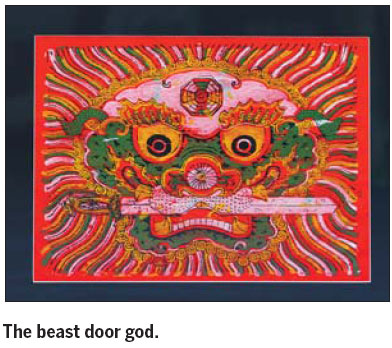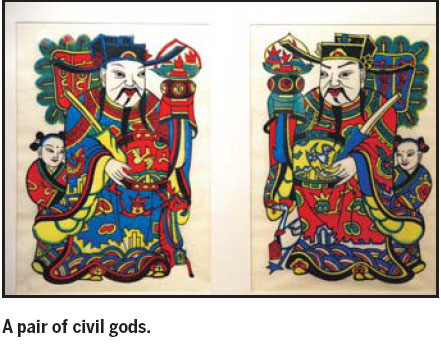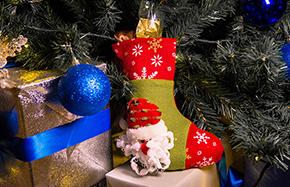Collecting memories
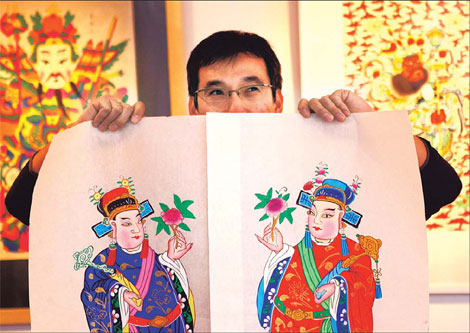
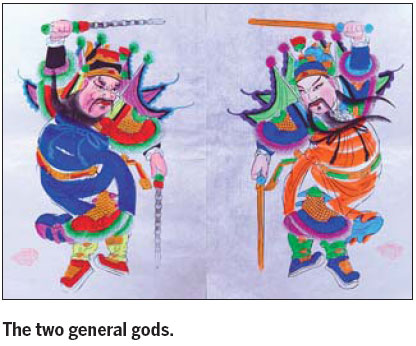
These paintings are, in fact, wood-block prints - a typical form of decoration used in households over the Spring Festival, according to traditional Chinese folk custom.
The theme of the exhibition is "door gods", with entries from the four main forms of door god: civil, military, child and beast.
Military door gods are the most familiar type in China, with popular characters that include Qin Qiong and Yuchi Gong - two generals back in the Tang Dynasty (AD 618-907).
According to folk legend, Li Shimin, the second emperor of Tang Dynasty, had difficulty falling asleep because he would imagine hundreds of imps coming to attack his dreams as he nodded off. The two generals were sent to guard his bedroom door and their god-like images were preserved as tradition.
One beast door god on display at the exhibition is a lion with a sword in its mouth. The painting is particularly rare because it has been printed on a piece of red paper, instead of a white one, and has no pair.
Some paintings were also hand-painted after their outlines were stamped, with the most advanced technique being tianshuijiao, which means "filling the color in one stroke".
"It is fabulous because few people can actually do it, even though it seems so easy," said Joao Neisinger, a tourist from Germany.
Presenting the exhibition is Yin Qi, a keen collector of woodblock prints. Yin, 32, once majored in financial management at university. He became interested in Chinese folk culture after meeting foreigners who shared the passion.
"Chinese New Year paintings are interesting because you can tell their origin by their style," he said.
"Those from Suzhou are delicate, while those from Hunan province are brighter in color. Shandong province prints are simpler and earthier."
However, Yin said the once-flourishing folk art is no longer popular.

"The museum with the largest collection of New Year paintings is in Russia, not in China, and the British Museum has many designs that were lost in China," Yin said.
"The youngest woodblock printers I meet are 40 at least. Young people don't want to learn it anymore because they can't survive by doing it."
Yin said he has traveled around China collecting more than 600 pieces and his standards are high. He usually selects only about 5 percent of any he discovers. To cover some of his costs, he is selling pieces of the collection from 80 yuan to 2,000 yuan each.
"Some people might think this is too expensive, but look at the price of printed posters sold in 798," he said.
"The government has spent almost 18 billion yuan on intangible cultural heritage, but little of the money goes to the craftsman," he said. "Only by marketing can the art thrive again."
Yin is already planning another wood-block print show in Guangdong province this year.
